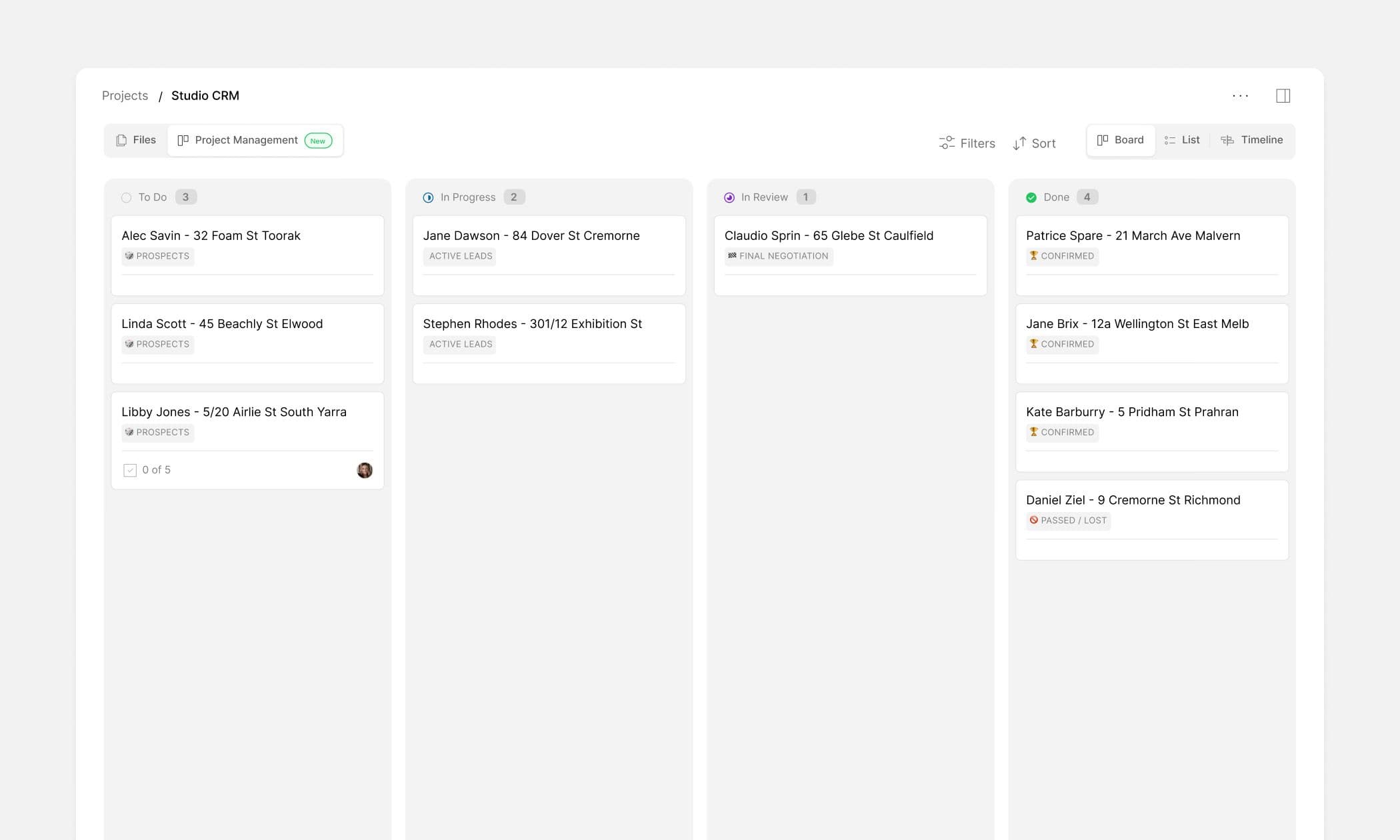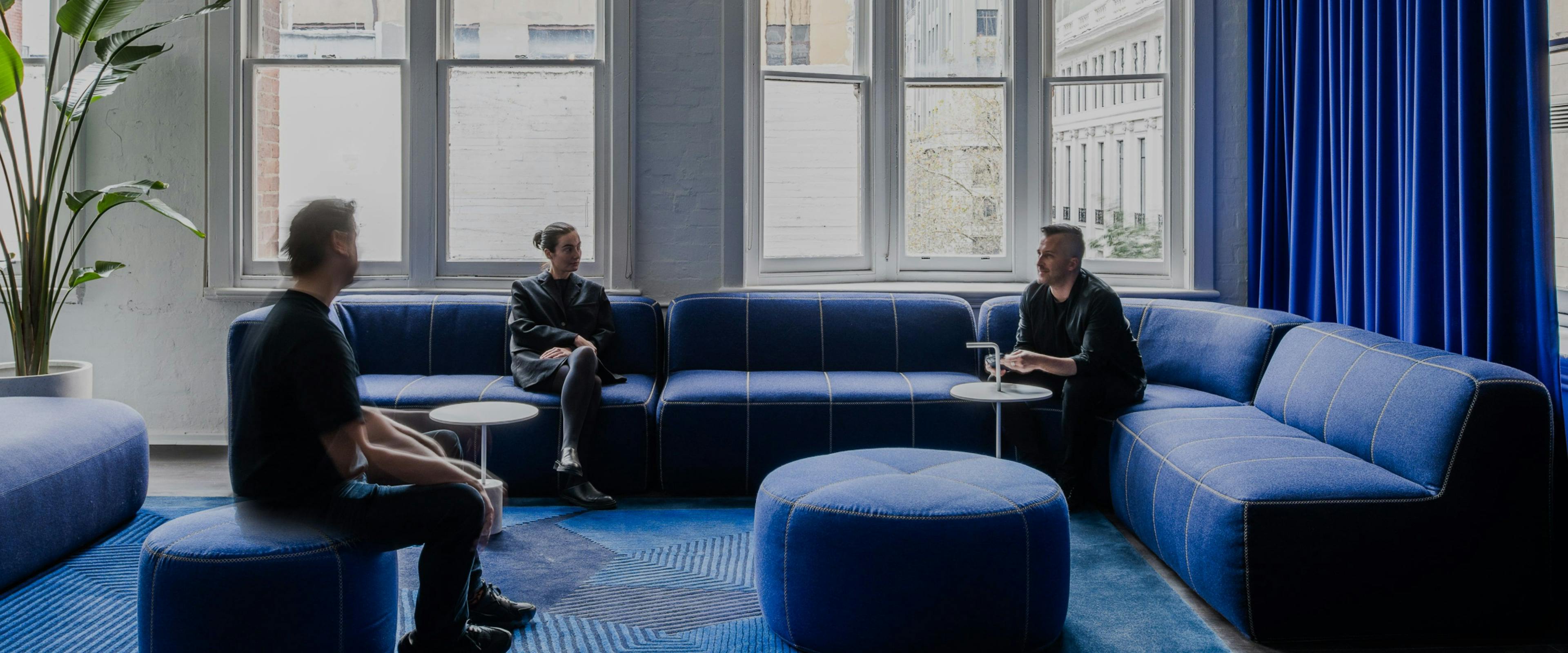Winning work as an interior designer is often the most challenging part of the business, but it’s also the most crucial. The competition is fierce, and landing new projects can make or break the growth of your studio. At the heart of consistently winning new projects lies one essential tool: a reliable CRM (Customer Relationship Management) system.
Why Interior Designers Need a CRM

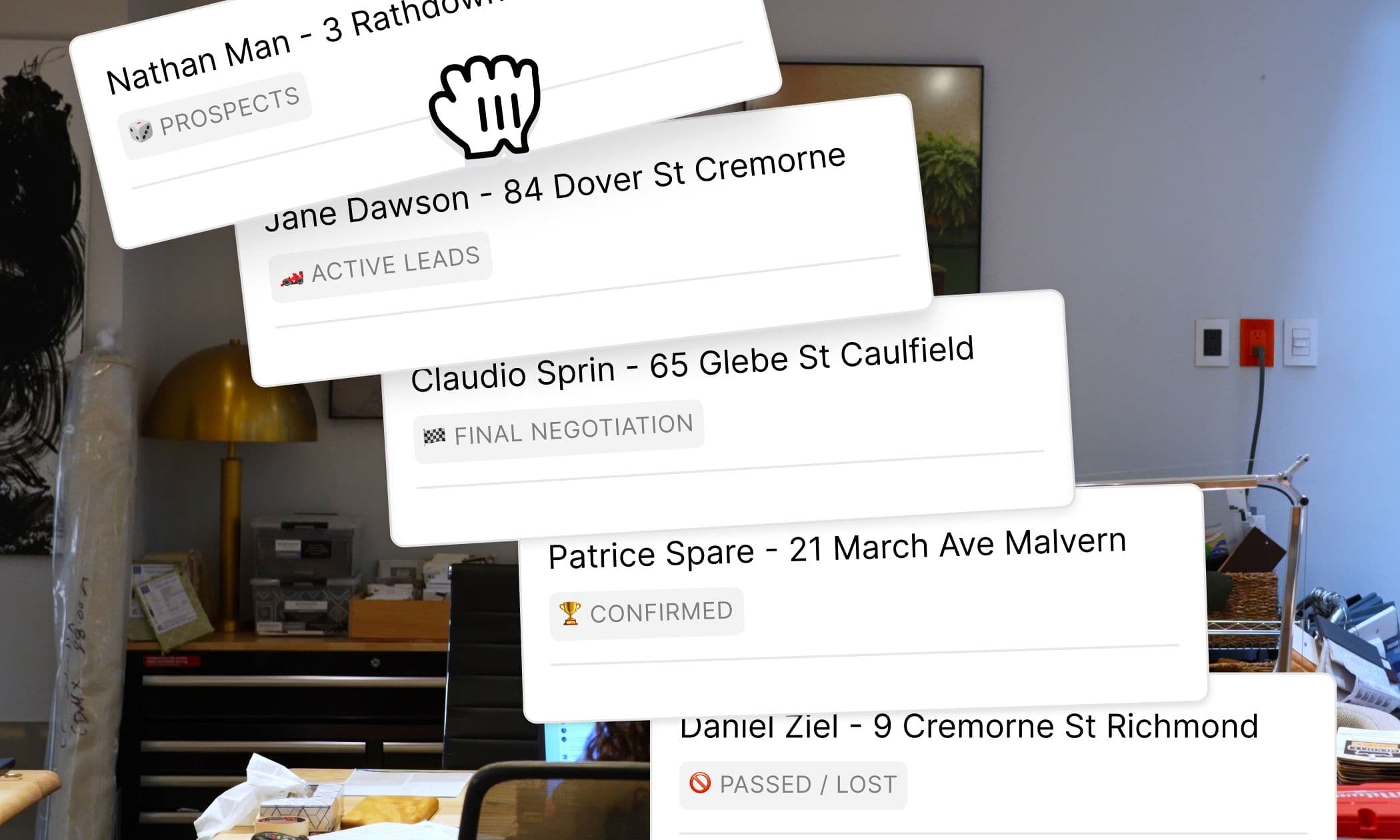
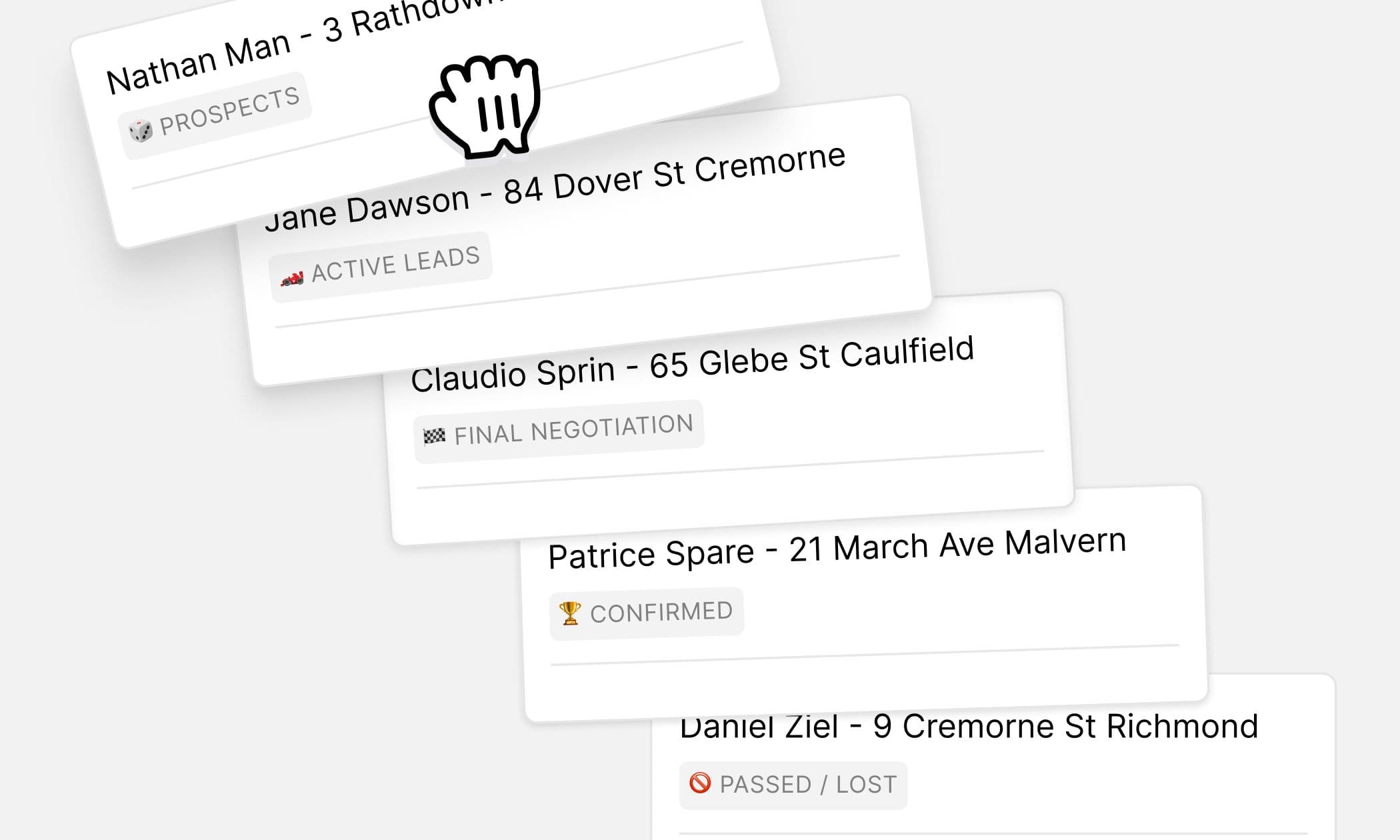
Why Winning Work Matters for Interior Designers
Winning work is not just about securing new projects, it’s about building long-term relationships and growing a client base that brings repeat business and referrals. Every new project represents an opportunity to showcase your unique style, expertise, and reliability. Consistently acquiring new work ensures a steady revenue stream, increases brand visibility, and gives you the chance to expand your portfolio.
However, managing multiple leads, nurturing potential clients, and tracking conversations can be overwhelming, especially when juggling ongoing projects. This is where CRM software for interior designers becomes a game-changer.
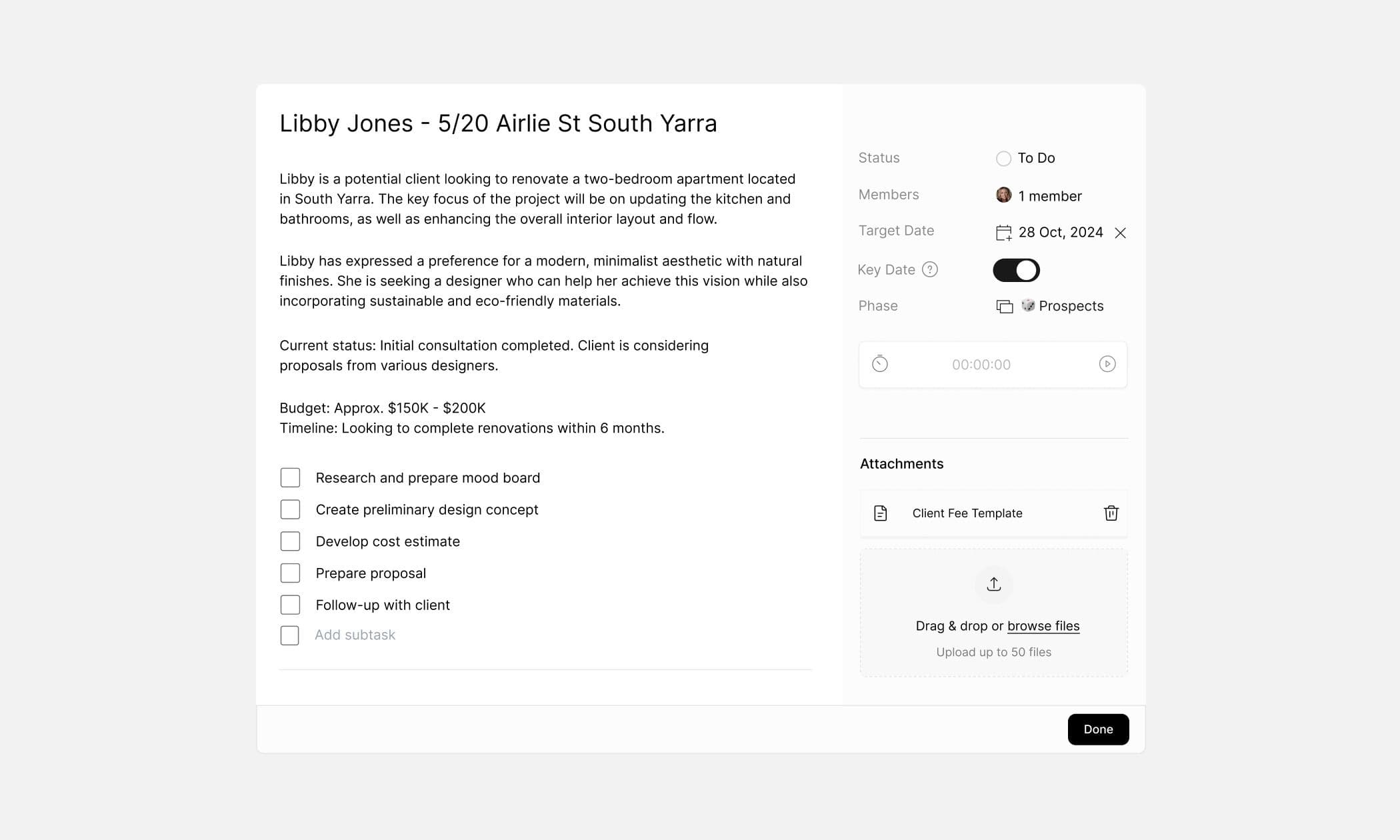
The Benefits of CRM Software for Interior Designers
A good CRM system is more than just a contact database. It should provide structure and visibility for managing your client relationships and sales pipeline, enabling you to keep track of every opportunity. Here’s how a CRM can transform your interior design business:
- Centralized Client Information
A CRM allows you to keep all your client and prospect data in one place. You can log every interaction, proposal, and follow-up, ensuring nothing falls through the cracks. Instead of searching through countless emails or documents, you have all relevant information at your fingertips. - Organized Sales Pipeline
Interior designers often need to manage multiple client interactions and proposals simultaneously. A CRM system allows you to visualize where each prospect is in the sales process—from the initial contact to the negotiation phase—so you can prioritize your efforts and focus on leads that are more likely to convert. - Task Management & Follow-Ups
Missing a follow-up email or forgetting to send a proposal can mean losing a project. A CRM helps you stay on top of these essential tasks. With built-in reminders and task management, you can track everything from follow-ups to proposal deadlines. This ensures timely communication and gives clients the confidence that you’re proactive and organized. - Tracking Lead Progress
Understanding the progress of each lead is crucial for closing deals. A CRM enables you to track key information such as when you’ve had initial conversations, sent proposals, or received client feedback. This history is valuable for tailoring your approach to each potential client and refining your sales process over time. - Internal Collaboration
If you’re working with a team, a CRM becomes an even more valuable tool. All members of your studio can access the latest updates on leads, proposals, and tasks, which helps avoid miscommunication. Everyone stays aligned on the next steps, and you avoid duplicating efforts or missing deadlines.
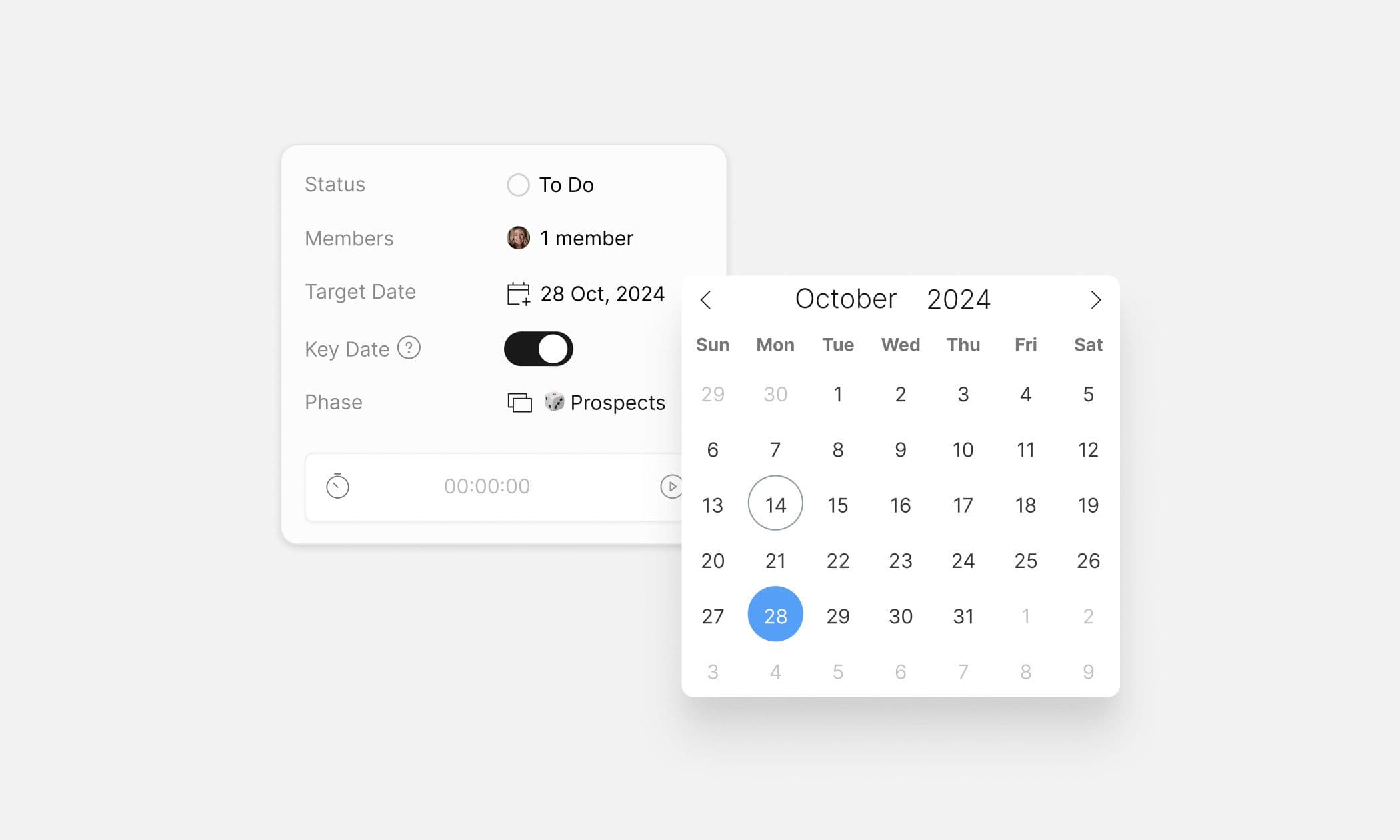
Using Project Management Tools as a CRM
While there are specialized CRM tools available, many interior design studios find that using a project management tool as a CRM is just as effective. Tools like Programa, for instance, allow you to create custom phases, track tasks, and manage all aspects of your sales pipeline. You can use it to create dedicated “CRM projects” that store all the information about your leads and prospects, assign tasks, set deadlines, and manage the entire sales process from inquiry to project confirmation.
The flexibility of a project management tool like Programa allows you to combine both project and sales management into one platform, minimizing the need for multiple tools and providing an integrated approach to managing your studio’s workflow.

Outcome
Winning new work as an interior designer requires organization, timely communication, and a proactive approach. A CRM software for interior designers—whether it’s a dedicated CRM platform or a flexible project management tool—helps you track leads, manage tasks, and ensure that no opportunity is missed. By keeping your sales pipeline organized and accessible, you’ll be better positioned to close more deals, grow your studio, and focus on what you love most—designing beautiful spaces.
